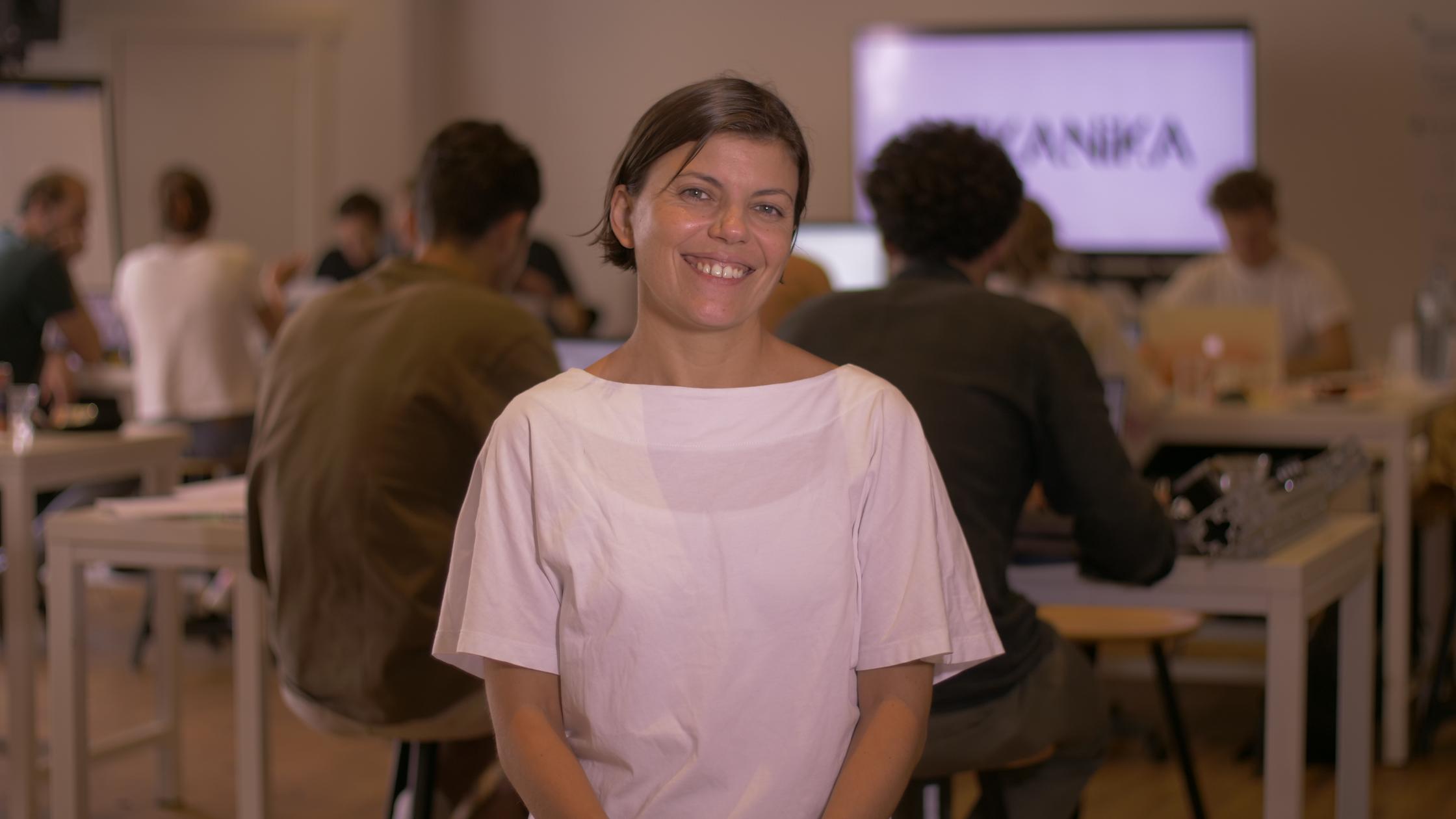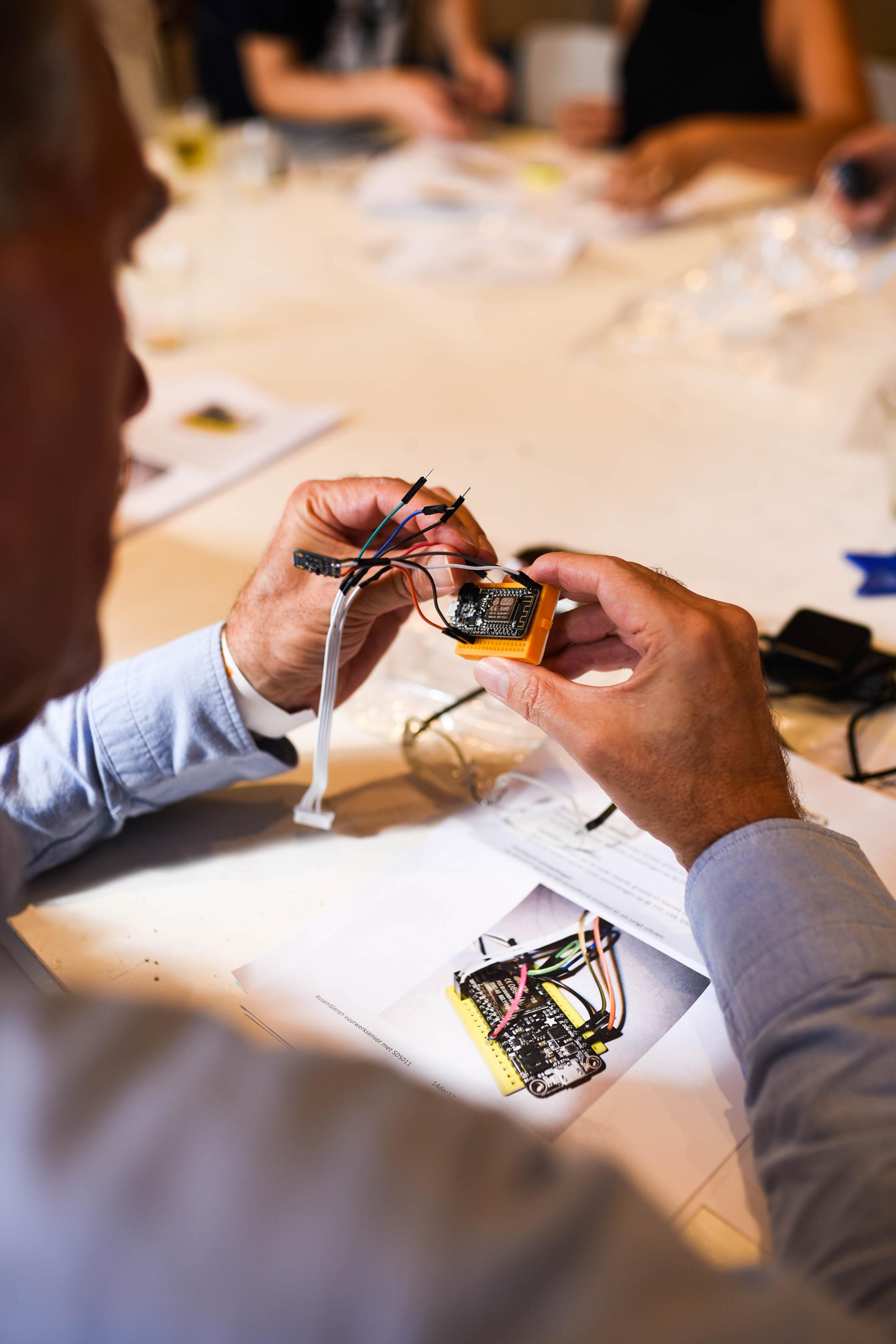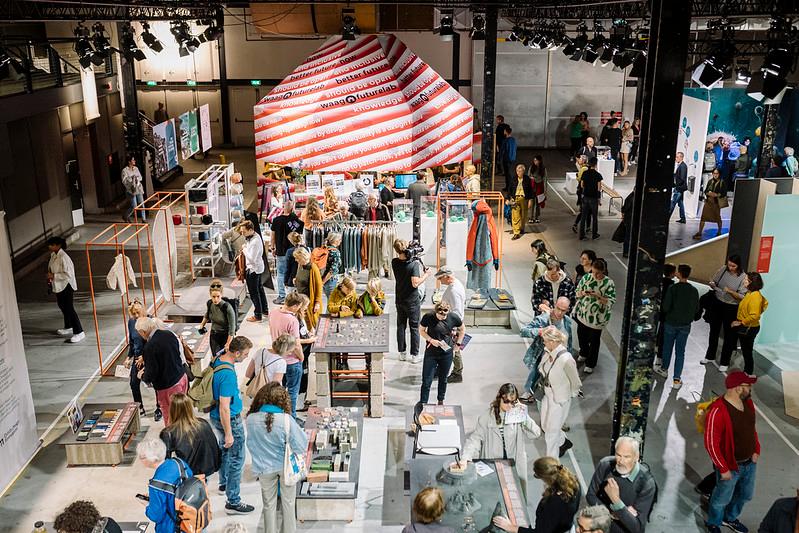Most of the tools we use in our daily lives are manufactured with complex processes behind the doors of large companies. What if we, consumers, could create such tools ourselves? Make our own bandsaws, drills or even CNC milling machines? Last week Waag and Mekanika joined forces for a two-day-long design marathon. A group of eleven designers and engineers were invited to reverse-engineer an existing industrial machine that’s already on the market. The participants had to transform the machine into an accessible, replicable and sustainable open source design, making the blueprints of the design available to the world.
Three designers and engineers talk about open source machines, collaborative design, the marathon and the future of design.
Maxime Gravet
Can you tell us something about who you are and the work you do?
My name is Maxime, I’m a mechatronics engineer. I started working more in machine design a few years ago. I started an engineering and design studio with one of the co-founders of Mekanika, Martin. We provided an engineering and design service. People would come to us with ideas, and we would draft, design, or even prototype them. We quickly realised we needed machines that we didn’t have access to. That’s when we started to build our own machines. We soon found out, that we really enjoyed doing that. We realised how having access to certain processes and certain machines enables and empowers you. Roldan, the third cofounder helped us create our company Mekanika out of that idea. With Mekanika we want to facilitate manufacturing processes for local communities, through open source tools and quality educational content.
This marathon is designed around open source hardware and collaborative design. What do these concepts mean to you?
We use open source software all the time without realising it. If you have a smartphone running on android, you are using a completely open source operating system. This means that anyone can download, use, and modify it at will. In software, this means you can look at the code and change it. You can make a physical object (hardware) open source by sharing how it is assembled and sharing what type of screws or materials are used. You share the 3D files of your object and allow people to modify them. The concept of open source becomes powerful when people that are not in the same room can collaborate on an object that is open, shared, and easy to access. That is what collaborative design is. Working from remote places on pieces of code is relatively easy. With 3D design, it is much harder. Not everyone uses the same software, and it is harder to review things when they are 3D models. This adds a layer of complexity. In this marathon, we try to tackle that complexity.
What is the main aim of this design marathon?
We would like to lay the foundation of a small community of people that are interested in designing open source machines and sharing their designs online. It was a great opportunity to come to the Fablab here at Waag and meet and connect with those people. The participants of the design marathon are reverse engineering existing machines that are sometimes industrial and not very accessible. The participants are asked to redesign the machines to make them a little bit smaller, open source and modular. In this way, the machines are catered more to the individual rather than the industrial scale.
How do you envision the future of design?
I think it can go two different ways. Either the globalised system we live in is going to get even more intense in its mass production and desire for efficiency. I hope it will go in another direction. The last few crises have shown that the globalised system is not very resilient. I believe we must rethink the way we design objects, so they are more resilient. To do this, objects should be produced more locally and circular. I think that more and more designers are going to start to work with that mindset.
Justine Lebrun
Can you tell u something about who you are and the work you do?
I’m Justine. I recently graduated as a mechanical engineer. The goal for my thesis was to redesign everyday objects and household appliances like blenders or coffeemakers in a more circular way. By reconnecting people with the technology in their own house we can make them more responsible for their electronic waste. This has a big environmental value. It’s just a shame to throw everything in the bin.
What do you hope to take away from this design marathon?
So many things! Since I just graduated, I am happy to get the chance to collaborate with people from different backgrounds with different mindsets. It can be a challenge to translate your ideas into physical and virtual concepts. I am excited to be in this kind of environment and learn how to navigate through that.
I noticed only two women are participating in this design marathon. Are women underrepresented in the world of design and engineering?
In mechanical engineering and industrial design, less than 30% of the people are women. The previous generations saw these fields as fields for men. They claimed it requires manliness and ‘pragmatic brains’ to work with powerful machines. You still see evidence of this kind of thinking. In the mechanical laboratories, the security shoes start from size 42 and the lab coats are very large! As a woman, you feel like you’re not welcome. Right now, this is shifting. We are realising that preferences are not gender orientated. The toys we give to our children depend on their gender; boys get toolsets and girls get to play with dolls. Doing mechanical engineering or being a nurse has nothing to do with gender, but with the way we educate kids from a very young age.
Emma Pareschi
Can you tell us something about who you are and the work you do?
My name is Emma Pareschi. I have a background in electronic engineering. For Waag I am working on the Open Next project, to guide and work with companies like Mekanika. We investigate how open source hardware and a collaborative approach can benefit their business.
This design marathon is designed around open source hardware and collaborative design. What do these concepts mean to you?
I learned about open source in the Fablabs. Open source is making the tools, process and results of your work available to the world with the idea that someone with the right skills can reproduce and modify your work. Opening the design process should be the motivation to bring together people that can use those tools and processes. That is what collaborative design is. Open source design without collaboration doesn’t make any sense. Collaboration is a natural condition for open source design.
How do you envision the future of design?
I envision it globally connected but locally oriented. We need to start thinking about the places we are in. Something that can be made in Australia can’t be reproduced and made the same way here in Europe. After all, we have easy access to different materials in different parts of the world. Design used to be human-centred. Nowadays, this is not enough. We can’t put ourselves in the centre of everything. We should take a step back and move from the centre and let the community and the environment take the stage. I hope that designers can keep the impact they can have on people and the environment into consideration.
X-TREME SHREDDER wins the marathon
While Open Next is all about new ways of collaborating, there was some competition involved in the marathon. After two days of reverse engineering, one team had the most innovative idea, that was well documented and convinced the jury of experts. Jury members Carolina Espinoza (industrial designer), Daniele Ingrassia (founder of InMachines), Trammell Hudson (programmer en reverse engineering enthousiast) en Henk Buursen (lead Fablab at Waag) were unanimously positive about X-TREME SHREDDER, a machine that allows old cardboard to be recycled into packaging materials. The lessons learned in the marathon were rightly executed in the design, such as documentation, replicability and the use of widely available parts. An open source design, that helps in recycling packaging materials, in ‘an age of delivery’ was the winner of the Open Next marathon.


